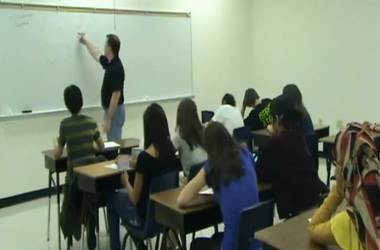Sunday, April 07, 2013
Posted by bibbah
No comments | Sunday, April 07, 2013
Why do classrooms and schools operate almost the same way they did
100 years ago?
A group of middle schoolers from the Dallas-Fort Worth
area began asking themselves this question during a class discussion of
Orson Scott Card’s science fiction novel Ender’s Game.
More importantly,
they began to wonder, “Could children, using the internet, have a
dramatic impact on the world around them? Could they influence public
opinion, and make a mark on their world?”
Thus began “Education
Evolution,” a class video project that brings a student perspective to
what’s going wrong in the modern classroom, and offers up ideas of how
it can be fixed.
The students began working on the project back in January, generating
ideas, storyboarding scenes, and dividing the work into groups. When
you watch the product of their months of work, the video above, it’s
easy to think they simply want more technology—more learning via
laptops, tablet technology, and software—in classrooms. But it’s also
clear that they’re clamoring for an end to a factory-based model of
education. No more sitting in rows facing forward while a teacher
lectures at a whiteboard, no more rote memorization and multiple choice
testing. Instead, they want collaboration, learning driven by student
interests, and project-based tasks.
But why listen to what a bunch of seventh and eighth graders think
about schools? Their teacher, J. Fletcher, recently wrote on the project
blog that his beliefs about teaching and learning have changed because
of his students.
These students really are right. Educational needs aren’t the same
as when I was in middle school twenty years ago. The modern educator is
a facilitator, an organizer, and a guide—the modern educator is NOT
a teacher. We are no longer (or should no longer be) in the business of
giving information. The information is out there, easily grasped. It’s
our job to present it to the students in a way that makes them want to
learn themselves. That’s basically what this video—and this whole
project—is about. We’re still using exactly the same methodologies—with,
in some cases, niftier tools—that we used twenty (one hundred!) years
ago. Lecture and listen. Drill and kill. Review and test, always test,
again and again. Repeat with next unit. That was onerous and tired
twenty years ago when I was a student. Why are we still using it now?
Fletcher and the students hope their video goes viral and that it
sparks conversation and real change in the way teachers and schools
operate.
Check the video and judge by yourselves
Tell us what do you think ??????
Subscribe to:
Post Comments (Atom)











0 comments:
Post a Comment